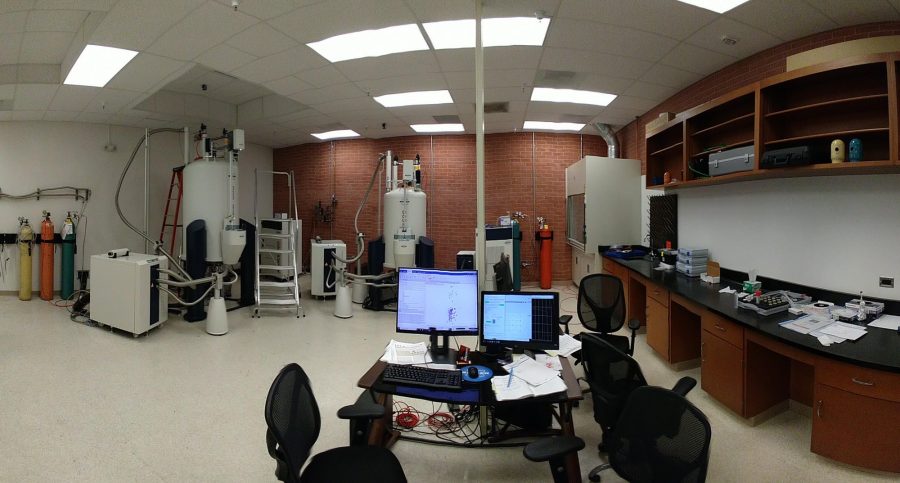New findings by University of Arizona researchers Wolfgang Peti and Rebecca Page provide a start to better understanding Down syndrome and Alzheimer’s disease.
Peti has been investigating the interaction between two proteins found in both Down syndrome and Alzheimer’s disease; due to past technological limitations, researchers were prevented from determining the relations between the two proteins, Calcineurin and RCAN1.
Peti and Page had to develop a hybrid technology that combines two chemistry techniques in order to obtain the structures of the proteins that would help them understand their interaction. The two researchers realized that both techniques needed to be combined into a hybrid technology because another researcher used X-ray crystallography to try to get the structure.
“[Page] is a very experienced crystallographer and tried every trick in the books,” Peti said of the other researcher in an email.
Yang Li, a research scientist, and another researcher started to use NMR spectroscopy and realized that what the crystal structures show is just half of the story. Li then decided to combine the techniques.
Peti and Page got assistance from other researchers to help with combining all the parameters from different techniques.
“Needless to say, we learned a lot,” Peti said in an email.
Calcineurin, or CN, is a key piece in several biological processes, including human development. Another protein called RCAN1 has been known for about 20 years. Patients with Down syndrome have high levels of RCAN1 which disturbs the balance and leads to an over-inhibition of CN.
Many individuals with Down syndrome are diagnosed with early-onset Alzheimer’s by the age of 40. Around three-fourths of those with Down syndrome had developed dementia by age 60.
Alzheimer’s is caused by hyperphosphorylation of the protein tau, which upon hyperphosphorylation will aggregate.
RELATED: What is pooled testing and how can it help limit the spread of COVID-19?
“Hyperphosphorylation can be overcome when phosphatases, such as calcineurin do their job. Unfortunately, when RCAN1 inhibits calcineurin it cannot do its job and tau is hyperphosphorylated and thus tau will start to form fibrils, which leads to Alzheimer’s,” Peti explained in an email in regard to why many people with Down syndrome also have early-onset Alzheimer’s.
Peti has been doing research since 1992. He started biomolecular NMR spectroscopy research in 1996.
“We are using complex molecular biology, cell biology and biochemistry to get our protein samples, which we then analyze at atomic resolution using a variety of techniques,” Peti said in an email.
Since both structure and dynamics define the function of our molecules, Peti and Page are able to understand not just how these proteins function, but more importantly how they drive biology.
Peti’s laboratory is involved in a large number of projects which are all focused on protein function that is critical for biological processes, such as signaling. His laboratory is supported by 5 NIH awards in order to investigate how protein phosphatases function and become specific towards their substrates.
“This project was critical to understand this aspect of our work for the phosphatase calcineurin, which is 1% of our brain mass,” Peti said in an email.
If calcineurin functions incorrectly, such in the case presented here, the disease is the consequence. Peti said he tries to understand how disease happens so he and the people he works with can find routes to mitigate it.
Peti thinks that these findings will lead to a new treatment or prevention of these neurological diseases in the future.
“Only by better understanding how things work, we can design better ways to make it function better,” Peti said in an email. He said he got into this research because “it is the most fun thing to do. Finding out new things, collaborating with many smart minds and getting excited about your results, best thing to do.”
Follow Jillian Bartsch on Twitter









